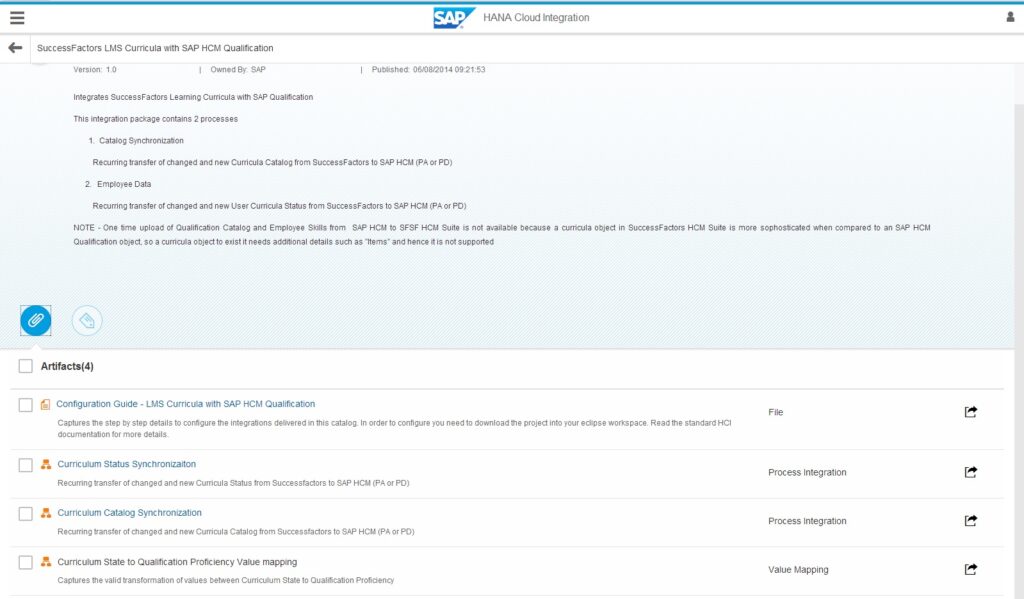SAP HANA Cloud Integration (HCI) is a cloud-based integration platform designed to facilitate seamless connectivity between various applications and systems within an enterprise landscape. As organizations increasingly adopt cloud solutions alongside their existing on-premise systems, the need for a robust integration platform becomes paramount. HCI addresses this need by providing tools and services that enable efficient data exchange and process integration across diverse environments.
Overview of SAP HANA Cloud Integration (HCI)
HCI is part of SAP’s broader strategy to offer integration capabilities as a service, leveraging the power of the SAP HANA Cloud Platform. It supports a wide range of integration scenarios, including cloud-to-cloud, cloud-to-on-premise, and on-premise-to-on-premise integrations. This flexibility allows businesses to connect SAP and non-SAP applications, ensuring consistent and reliable data flow across their IT ecosystems.
Key Features of HCI
- Pre-Packaged Integration Content: HCI offers a rich library of pre-built integration packages that cater to common business scenarios. These packages include integration flows, mappings, and configurations that can be readily deployed, significantly reducing the time and effort required to set up integrations. For instance, there are packages available for integrating SAP SuccessFactors with SAP ERP systems, streamlining HR processes across platforms.

- User-Friendly Design Tools: The platform provides intuitive design tools that enable users to model and configure integration flows without deep technical expertise. The web-based interface allows for the creation, deployment, and monitoring of integration scenarios, making it accessible to both developers and business users.
- Robust Connectivity Options: HCI supports a wide array of adapters and protocols, including SOAP, REST, OData, SFTP, and more. This extensive connectivity ensures that businesses can integrate a diverse set of applications and systems, both SAP and non-SAP, cloud-based and on-premise.
- Scalability and Performance: Built on the SAP HANA Cloud Platform, HCI leverages the in-memory computing capabilities of SAP HANA to deliver high-performance integration services. The platform is designed to scale with the needs of the business, handling increasing data volumes and complex integration scenarios efficiently.
- Security and Compliance: Security is a critical aspect of any integration platform. HCI incorporates robust security measures, including data encryption, secure communication channels, and compliance with industry standards and regulations. This ensures that sensitive business data is protected during transit and at rest.
Integration Scenarios Supported by HCI

- Cloud-to-Cloud Integration: As businesses adopt multiple cloud applications, integrating these systems becomes essential. HCI facilitates seamless integration between various cloud solutions, enabling unified business processes and data consistency.
- Cloud-to-On-Premise Integration: Many organizations operate in a hybrid environment, with both cloud and on-premise systems. HCI enables integration between these environments, allowing businesses to leverage cloud innovations while maintaining their existing on-premise investments.
- On-Premise-to-On-Premise Integration: For organizations with multiple on-premise systems, HCI provides the tools to integrate these systems effectively, ensuring cohesive operations and data flow across the enterprise.
Use Cases of HCI
- HR Integration: Integrating SAP SuccessFactors with SAP ERP HCM allows for streamlined HR processes, such as employee data synchronization, payroll processing, and talent management. HCI provides pre-packaged content to facilitate this integration, reducing implementation time and complexity.
- Supply Chain Management: Connecting SAP Ariba with SAP ERP systems enables efficient procurement processes, supplier collaboration, and spend management. HCI supports these integrations, ensuring real-time data exchange and process alignment.
- Customer Relationship Management: Integrating SAP C/4HANA with SAP S/4HANA allows for a unified view of customer data, enhancing sales, service, and marketing operations. HCI enables this integration, providing a seamless customer experience across touchpoints.
Benefits of Implementing HCI
- Reduced Integration Complexity: With pre-built integration content and user-friendly tools, HCI simplifies the integration process, allowing businesses to focus on their core operations.
- Faster Time-to-Value: The availability of ready-to-deploy integration packages accelerates implementation timelines, enabling businesses to realize the benefits of integrated systems more quickly.
- Lower Total Cost of Ownership: As a cloud-based service, HCI reduces the need for significant upfront investments in hardware and infrastructure, leading to cost savings over time.
- Enhanced Flexibility and Agility: HCI’s scalable architecture allows businesses to adapt to changing requirements and integrate new applications as needed, supporting growth and innovation.
Conclusion
SAP HANA Cloud Integration (HCI) serves as a pivotal component in SAP’s integration strategy, offering businesses a comprehensive platform to connect disparate systems and applications. Its robust features, extensive connectivity options, and user-friendly design make it an ideal choice for organizations seeking to streamline their operations and enhance data consistency across their IT landscapes. By leveraging HCI, businesses can achieve seamless integration, driving efficiency and supporting their digital transformation initiatives.
